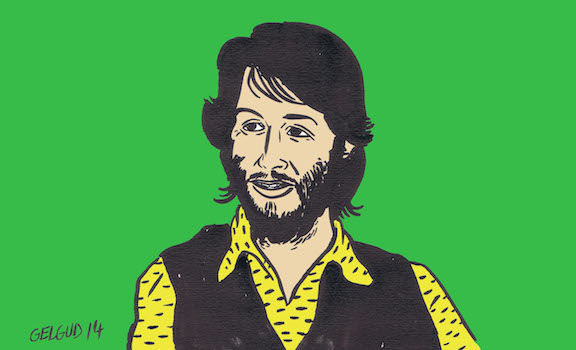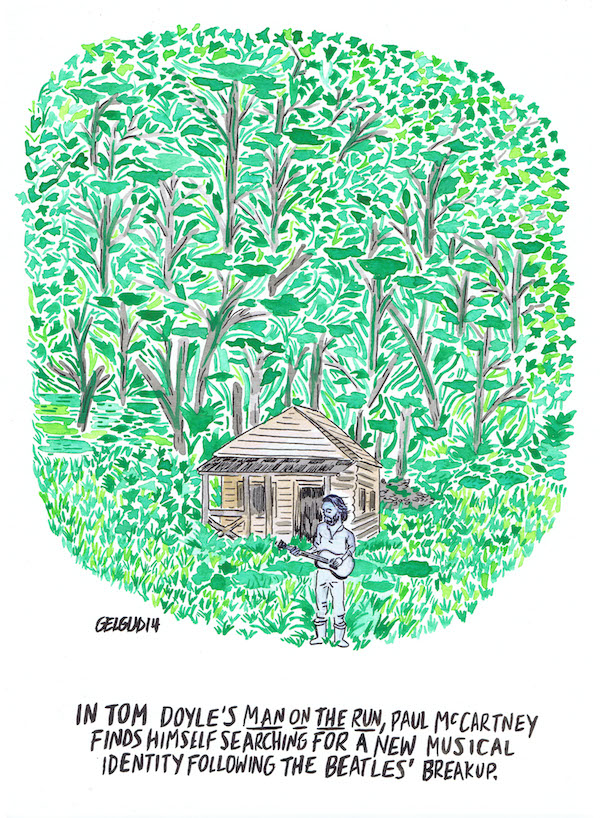Lost and Found by Music: Paul McCartney Finds His Post-Beatles Way
By Nathan Gelgud

Paul McCartney by Nathan Gelgud, 2014.
In 1969, Paul McCartney was living on a farm in Scotland. He was drinking whiskey for breakfast and self-medicating with marijuana. Occasionally, he was talking to himself nonsensically. He was scaring his wife, Linda, who saw a nervous breakdown in the making. She urged him to use the make-do recording studio he’d built on their property. Making music would help, even if he was just experimenting.
Meanwhile, some fans thought he’d been dead for years. That wasn’t Paul on the cover of Sgt. Pepper, it was a lookalike who’d received plastic surgery. His bare feet on the Abbey Road cover meant, for some reason, that he was dead. The other Beatles had had Paul replaced. Stoners, some of whom got into drugs because of the Beatles, concocted some far out theories, and some of them made headlines.
Even fans with cooler heads had reason to be concerned. Maybe Paul wasn’t dead, but had he gone crazy? He’d become a sudden recluse, abandoning the best band of all time. When a reporter and photographer tracked him down and snapped a wild-looking photo of him throwing a bucket at them, McCartney agreed to give them an interview in exchange for the roll of film. Then, in an offhand way, he told them. The Beatles were over.
Tom Doyle has written an entertaining, straightforward book about McCartney’s years after the Beatles. Man on the Run begins with the scene at High Park Farm in Scotland and continues to chronicle the ugly breakup of the Beatles. Relations between Paul, John, George, and Ringo were frayed and ugly: lawsuits were filed and windows were broken. It was sad, time-consuming, and emotionally draining. Fans were heartbroken, and even though they were displeased with each other, the Beatles' hearts must have been breaking, too. This could have crushed McCartney and might even have come close to killing him.
But Paul took Linda’s advice. He’d gotten some new ideas and mixed them with unused scraps of inspiration from the last Beatles sessions. He made McCartney, a fun and weird, almost frivolous, album. Against the wishes of his former bandmates, he released it before the Beatles' final album, Let it Be. Then he recorded and released another solo album, Ram. Then he formed a new band, Wings. McCartney and Ram were unsuccessful, and Wings was a problematic arrangement, probably because of McCartney. But the man was up and running.

Nathan Gelgud illustration inspired by Tom Doyle's 'Man on the Run,' a portrait of Paul McCartney in the 1970s.
